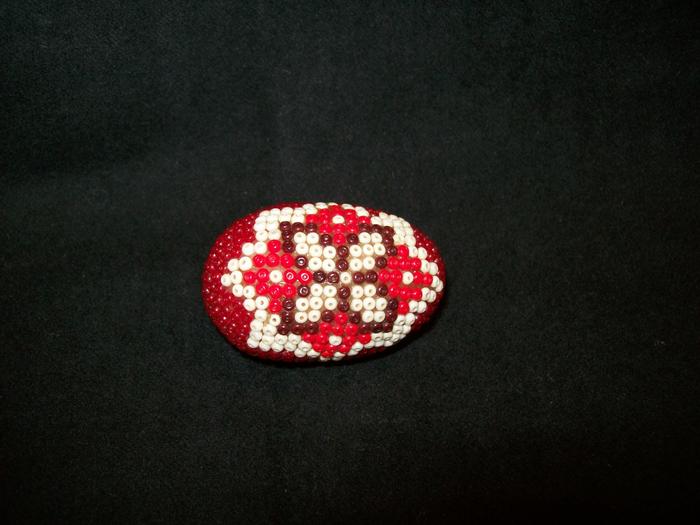Comments and Tags
Be the first to comment on this item!
Ceremonial Artifacts
European ➔ Egg, Beaded, Small With Star Pattern
Identifier:
2009.24.133Description:
Small beaded egg contains red, dark red, white, and maroon colored beads. These beads form two stars on the side of the egg.;These traditionally beaded pysanky eggs are significant because they represent the religious traditions and stylistic techniques of many European countries.;This object was part of the private collection gathered by local businessman and former Public Museum Board Member Steele Taylor. Mr. Taylor loves to travel and has collected objects from all over the world.;Pysanky eggs were created, originally in Western Ukraine where Romanian influence existed, for the religious holiday of Easter. These particular eggs in Mr. Taylor's collection are traditionally beaded pysanky eggs. This meant that a coat of beeswax was applied to the egg (either wooden or real) and beads were stuck on in certain patterns which could contain a variety of religious symbols, geometric shapes, or various designs.Date:
circa 1970Materials:
Inlay, Beaded, Beeswax, Wood, PlasticDimensions:
2" h 1.25" w 1" dCurrent Location Status:
In StorageSource:
Gift Of Taylor, Steele A.Exhibit/Program:
Sister cities ()Related Entity:
Steele A. Taylor (donor)Steele Taylor is a New Jersey native and a World War II Navy veteran. In 1948, after earning a degree in economics from Williams College in Winston, Massachusetts, he accepted a job offer from Dohler-Jarvis in Grand Rapids. In 1960 he moved to Grand Rapids Steel and was part owner and president when he retired in 1985. He has served on many boards throughout his career, such as the Mary Free Bed Hospital, Aquinas Emeritus Center, various Hospice boards and former member and president of the Art and Museum Board. Steele and his wife Mary are consummate world travelers and their collection is a testament to their travels. Artifacts donated by Steele are exceptional resources, representing various regions of the world. He has also donated an extensive collection of pewter items to the Grand Rapids Public Museum.
